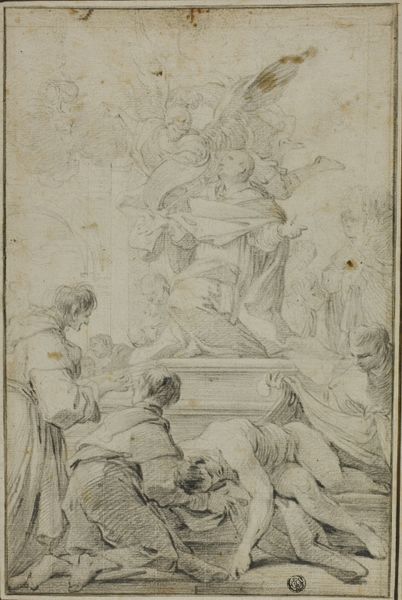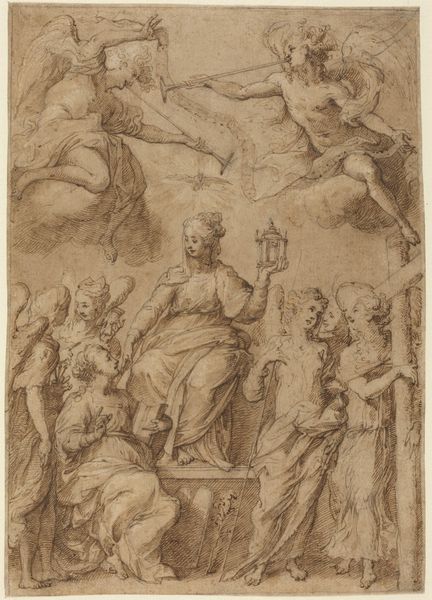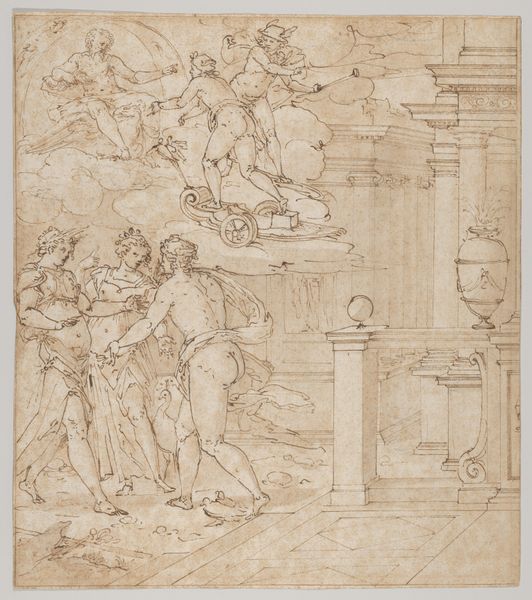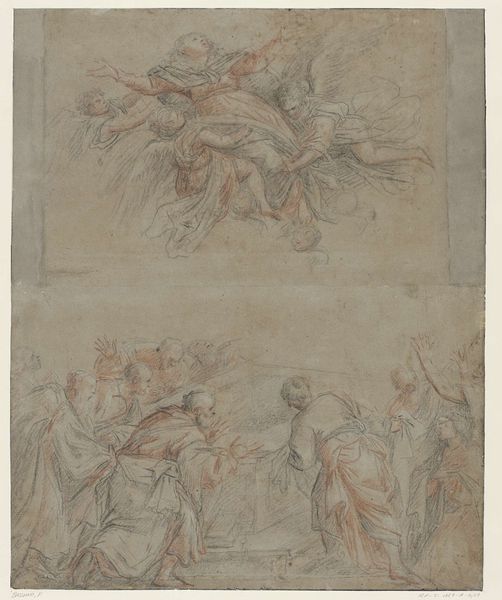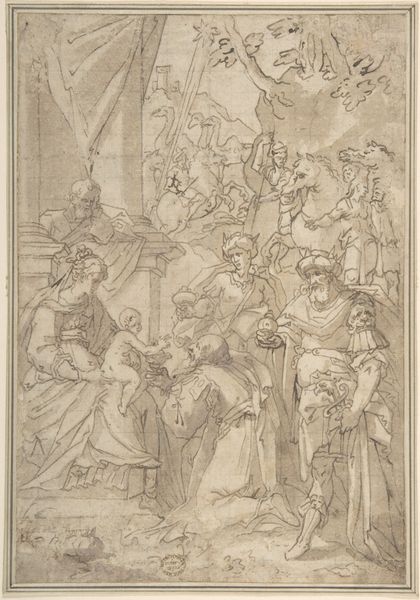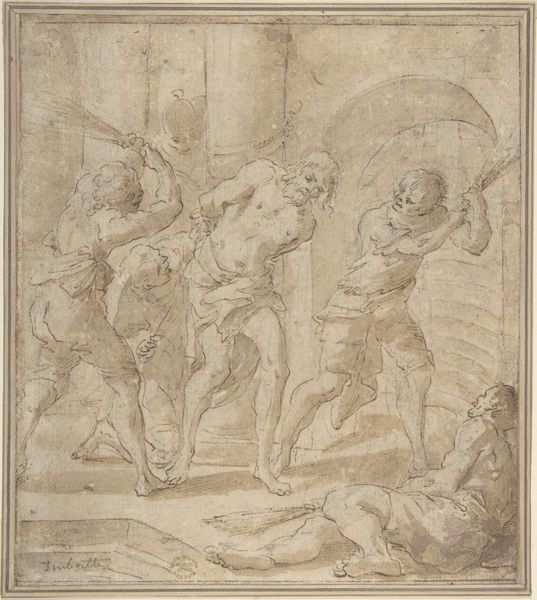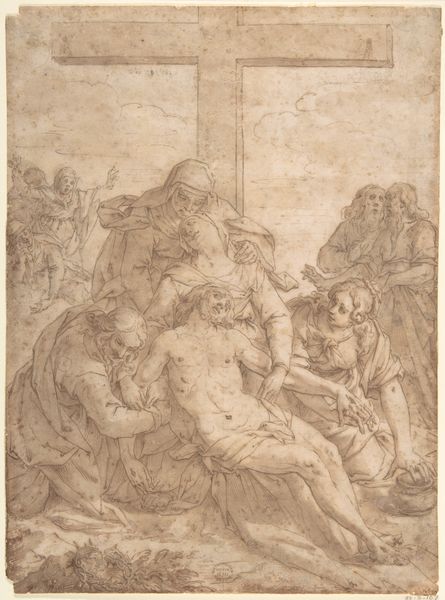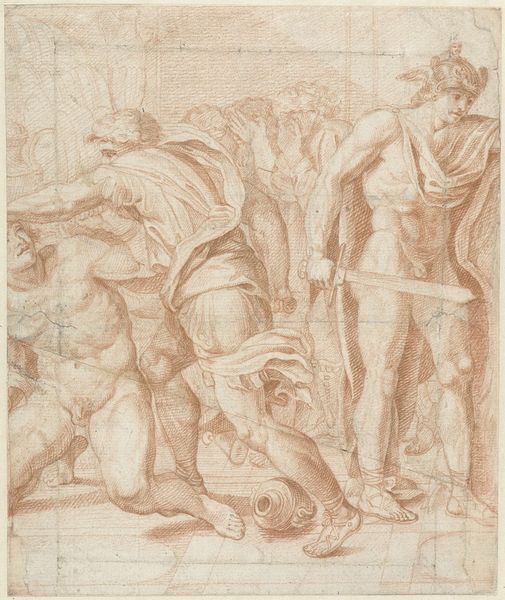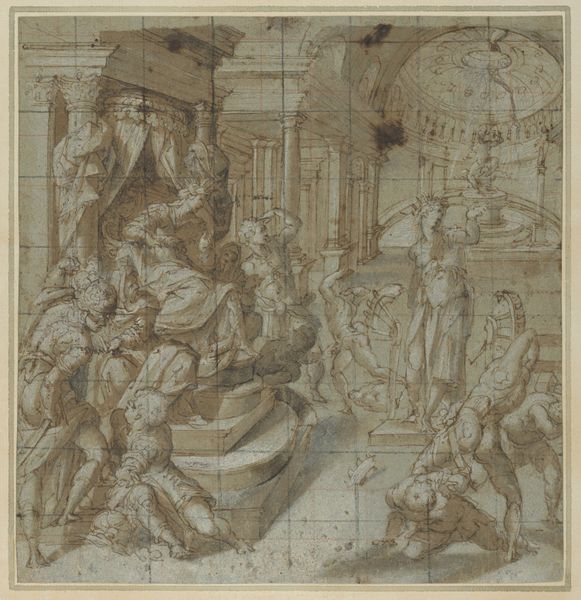
drawing, print, charcoal
#
drawing
#
narrative-art
# print
#
charcoal drawing
#
figuration
#
11_renaissance
#
charcoal
#
charcoal
#
italian-renaissance
Dimensions: sheet: 8 9/16 x 5 7/8 in. (21.7 x 14.9 cm)
Copyright: Public Domain
Curator: Looking at this drawing by Parmigianino, dating from around 1524 to 1527, titled "The Adoration of the Shepherds," my immediate sense is one of elegant dynamism. The upward sweep of figures and the ethereal quality evoke a sense of spiritual uplift. Editor: I'm struck by how this drawing encapsulates Renaissance notions of both piety and class structure. Consider how the shepherds—historically understood as the lowest social class—are essential participants in this sacred narrative. Parmigianino seems keen on exploring the intersection of earthly labor with divine grace. Curator: Indeed. If we examine the use of charcoal, we notice the varied line weights which grant some figures prominence while others recede into shadow. This allows us to concentrate on how Parmigianino structured the visual field with a compositional unity that balances movement and repose. Editor: I read that darkness quite differently. The original figures of the Nativity were ordinary people of color, who labored as shepherds in the regions surrounding Bethlehem. Medieval and Renaissance appropriations of those stories transformed the characters into white-skinned people to serve contemporary ideologies of that era. It feels deliberate. How else would you read this visual strategy within the colonialist moment? Curator: From a formal perspective, I see how the artist deployed hatching and cross-hatching. Note how those graphic techniques contribute to the chiaroscuro effects and provide an almost sculptural definition of the figures. There is tension. Do you see it, in the artist's command of form and shading? Editor: Certainly. Although these same devices of form have operated ideologically in religious art for centuries. What do you see of class consciousness in that tension? How might it relate to historical and gendered oppression of women—particularly considering the way Mary is positioned? Curator: Perhaps. Ultimately, what strikes me most is the dynamism. Despite the religious context, Parmigianino prioritized this sense of kinetic energy. It really makes the whole composition feel alive. Editor: This has given me much to think about—I'm seeing new layers, appreciating the context of its creation, and its subsequent interpretation. It definitely feels like we are not simply contemplating brushstrokes, but historical perspectives that shaped our vision of beauty and truth.
Comments
No comments
Be the first to comment and join the conversation on the ultimate creative platform.
